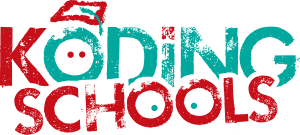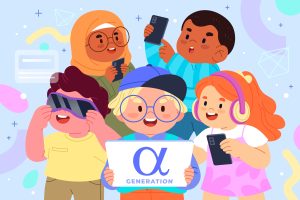The world of education is undergoing a profound transformation. Teachers are no longer just transmitters of knowledge; they are orchestrating learning journeys in a digital, diverse, and ever-changing environment. Yet, despite their commitment, one challenge remains: how to adapt teaching to the needs of every student without adding to teachers’ workload? International data highlights the scale of this issue: according to the TALIS survey, a significant share of teachers’ working time is taken up by preparation, grading, and administrative tasks — with large differences between countries. (csicr.cz)
This is precisely the challenge that AIA seeks to address. AIA Koding Schools’ Intelligent Teaching Assistant, currently in beta, is far more than just a “text generator.” It is a contextual educational AI embedded directly into the heart of lessons. Its mission: to speed up lesson preparation, support differentiated instruction, and give teachers back precious time for meaningful human guidance.

AIA in practice: an AI inside your lessons, not alongside them
Unlike general-purpose AIs, AIA operates at the level of each lesson on the Koding Schools platform: it “understands” the content you’re working on and offers recommendations aligned with your teaching sequence.
In just a few clicks, a teacher can:
- Get a clear and concise summary of the lesson they are preparing
- Access additional examples to enrich their explanations
- Generate creative activity ideas tailored to different levels
- Explore differentiated strategies to support both struggling and advanced students
👉 In short, AIA is not a generic AI: it’s a teacher-focused assistant, designed to understand the context of each lesson and personalize the teaching approach.
The problem to solve: overload and complexity
Diverse student levels, rising expectations from families and institutions, and the explosion of digital content are making classrooms increasingly complex.
Meanwhile, teachers juggle numerous tasks outside of classroom time (preparation, grading, reporting…), to the point that the “invisible” workload weighs heavily on their daily lives. TALIS data shows that a substantial share of weekly working time is devoted to these non-teaching tasks; for example, some national analyses report more than 30 hours per week spent on non-teaching duties in certain contexts. (csicr.cz)
At the same time, the education world faces a massive need for teachers — 44 million by 2030 — along with a well-documented rise in stress and fatigue among teachers since the pandemic. This underscores the need for tools that lighten their workload while supporting pedagogical quality. (UNESCO)
AIA: an assistant that thinks… pedagogy
AIA’s strength lies in its pedagogical contextualization. While general-purpose AIs often remain “out of touch,” AIA aligns with your learning objectives and asks the right questions:
- How can this lesson be made clearer for students at different levels?
- What variations can be offered to an advanced student who is getting bored?
- What fun activity can be created to re-engage a struggling class?
- What supplementary resources can be selected to deepen understanding or review?
Example in the classroom
You are preparing a lesson on sequential instructions in programming. AIA can:
- Summarize the essentials in a few lines (definition, objective, prerequisites)
- Suggest scaffolded exercises for beginners (simple step-by-step sequences)
- Formulate higher-level questions for advanced students (predict the output, identify a logical error, optimize a sequence)
- Suggest group activities (pair “debugging” challenges, small collaborative projects) that foster cooperation
- Recommend relevant and safe online resources to extend exploration
👉 Result: you no longer have to juggle multiple materials or tabs; AIA centralizes and contextualizes your needs at the very moment you are preparing.
Accessibility and inclusion: a model designed for schools
Koding Schools made a simple choice: to activate AIA where pedagogy actually happens within the platform teachers already use. No need to open a new tool or waste time copying and pasting. Each teacher receives a monthly quota of free prompts, based on the number of students in their classes on Koding Schools — a model designed for accessibility and equity.
Combined with lesson contextualization, this model makes it possible to embed AIA at the heart of the preparation routine while keeping costs and adoption under control.
Why AIA is different
- Context awareness: AIA “knows” the content of the lesson you’re working on — its responses are relevant and targeted, not generic.
- A differentiation tool, not a “text factory”: the goal is to adapt learning paths, not to pile up content.
- Zero friction: AIA is integrated into the Koding Schools workspace, with no extra apps or tabs needed.
- Equitable access model: monthly free prompts tied to the reality of your class.
Educational benefits aligned with research
Studies show that technology enhances learning when it strengthens pedagogy (guided practice, feedback, differentiation) — not the other way around. The Education Endowment Foundation (EEF) stresses the importance of relying on specific uses that enhance teaching, rather than piling up digital gadgets. This is AIA’s philosophy: to empower professional teaching practices. (EEF)
Similarly, well-supported differentiated instruction has been shown to have positive effects on student achievement, though its effectiveness depends on the level of support provided to teachers (training, resources, feedback). AIA brings this operational support into daily practice, helping teachers move from intention to implementation. (ERIC)
Finally, AIA’s approach aligns with UNESCO’s guidelines: an ethical, human-centered AI that supports learning, values the teacher’s role, and respects governance frameworks. (UNESCO Documents)
What teachers gain
- Time: minutes saved through automatic summaries, ready-to-use activity suggestions, and on-demand differentiated materials
- Clarity: a clear overview of the lesson and instantly usable extra examples
- Energy: less cognitive load outside the classroom, more availability for human guidance
- Creativity: an ideation partner suggesting varied approaches (projects, challenges, light gamification, collaboration)
…and what students gain
- Learning paths tailored to their level and pace
- Engaging activities that add meaning and diversify formats (individual, pair, group)
- More feedback and opportunities to practice critical thinking, creativity, and problem-solving
AIA does not replace teachers — it enhances education
At Koding Schools, we believe in a simple idea: AI should never replace human connection.
On the contrary, it should free up time for what can never be automated:
- Building trust and relationships with students
- Encouraging, inspiring, motivating
- Developing critical thinking and creativity
This is what we call: education augmented by artificial intelligence.
A clear ambition for Koding Schools
- Equip the next generation with digital skills (coding, data, digital citizenship)
- Equip teachers with a unique contextual educational AI
- Position Morocco as a major player in EdTech — first in local classrooms, then internationally
In practice: how to get started
- Are you a teacher on Koding Schools? Activate AIA from your lesson space and try it on your next unit.
- Are you a school leader? Contact us for a beta pilot: we’ll support your teams with training, setup, and impact tracking.
- Just curious? Request a demo: we’ll show you AIA in a real lesson preparation context.
Conclusion
AIA is not a trend — it’s a practical tool built with and for teachers, right where pedagogy happens: the lesson.
By making differentiation easier to prepare, providing contextualized content, and reducing invisible workload, AIA helps teachers refocus on what truly matters: time with their students.
Education is changing. With AIA, it’s changing for the better: more human, more inclusive, and more effective.
Sources and further reading
- OECD – TALIS 2018: time spent on preparation and non-teaching tasks, variations between countries. (csicr.cz)
- UNESCO – Global Report on Teachers: teacher needs by 2030 and professional challenges. (UNESCO)
- UNESCO – AI and Education: Guidance for Policy-Makers: principles for ethical and human-centered educational AI. (UNESCO Documents)
- Education Endowment Foundation (EEF): recommendations on the use of digital tools, with impact depending on pedagogy. (EEF)
- Research on differentiation: recent systematic reviews and meta-analyses. (ERIC)
Note: AIA is currently in beta. Its capabilities and access model (monthly free prompts indexed to the number of students) are subject to change based on field feedback.








